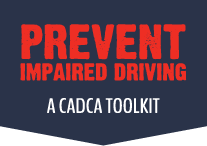Supplemental strategies:
Ride App Promotions to Enhance Access;
NHTSA messaging to Provide Information
Training in administering low-staffing checkpoints and “flexible checkpoints”
Community volunteer engagement in administering checkpoints
When community members are aware of the serious legal implications of a DWI / DUI conviction and understand that their community’s law enforcement agencies take active measures to apprehend drunk drivers, incidence of impaired driving is drastically reduced. It follows that the marker of a successful Sobriety Checkpoint program is not an increase in arrest rates, but an increase in the general public awareness of the intervention—it is a deterrent based on perceived risk of arrest.
There are several strategies that can be implemented by law enforcement and other parties to increase the efficacy of Sobriety Checkpoints, including:
- Saturation patrols (when law enforcement staffing capacity exists)
- Provide Information, including media engagement promoting the checkpoint program
- Community Campaigns
- Social norm events
While checkpoints have been shown to be highly effective, only 13 states conduct checkpoints on a weekly basis. Checkpoints are permitted in 38 states, but are not allowed because they would requires a statutory provision or are prohibited by state law (Richard, 2018, p. 41). Review impaired-driving related legislation in your state here.
Learn More!
- https://www.cdc.gov/motorvehiclesafety/calculator/factsheet/checkpoints.html
- https://www.madd.org/wp-content/uploads/2018/07/Sobriety-Checkpoints.pdf
- Review evidence from the Community Prevention Services Task Force
- Increasing Impaired-Driving Enforcement Visibility: Six Case Studies
- Evaluation of the Checkpoint Strikeforce Program – National Highway Traffic Safety Administration (NHTSA)

